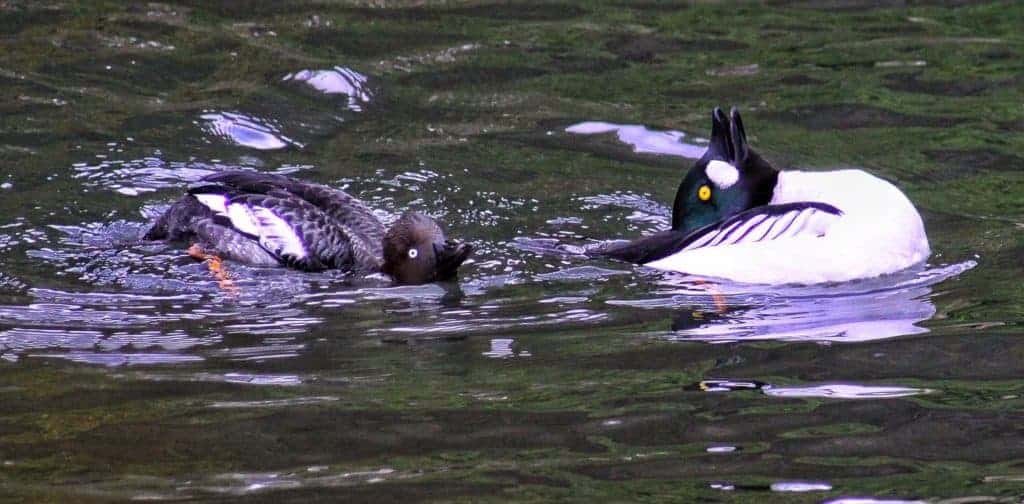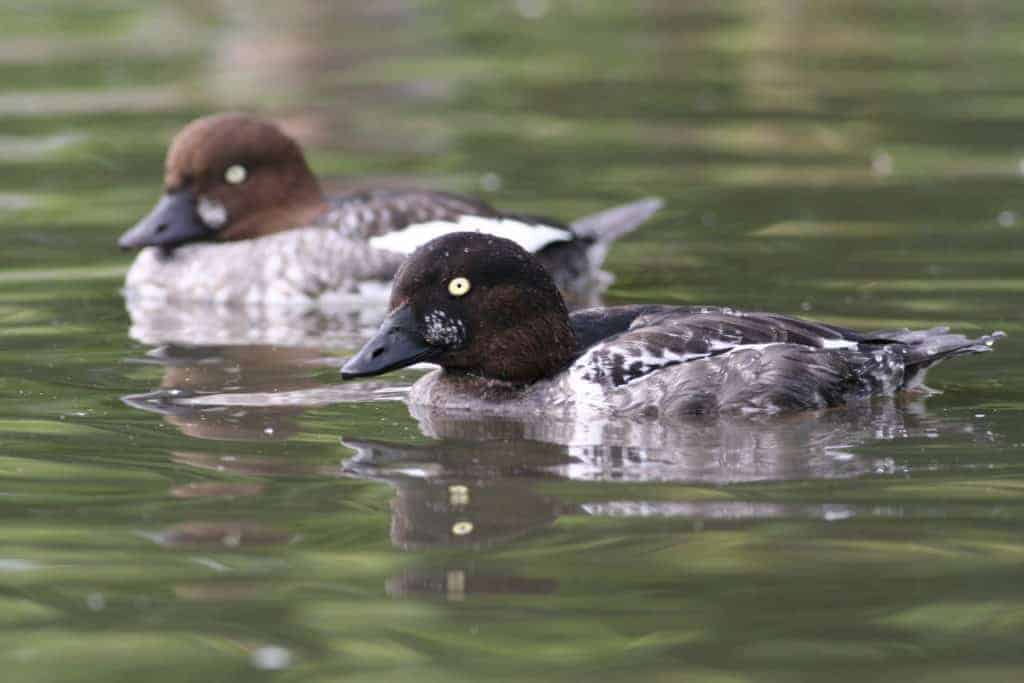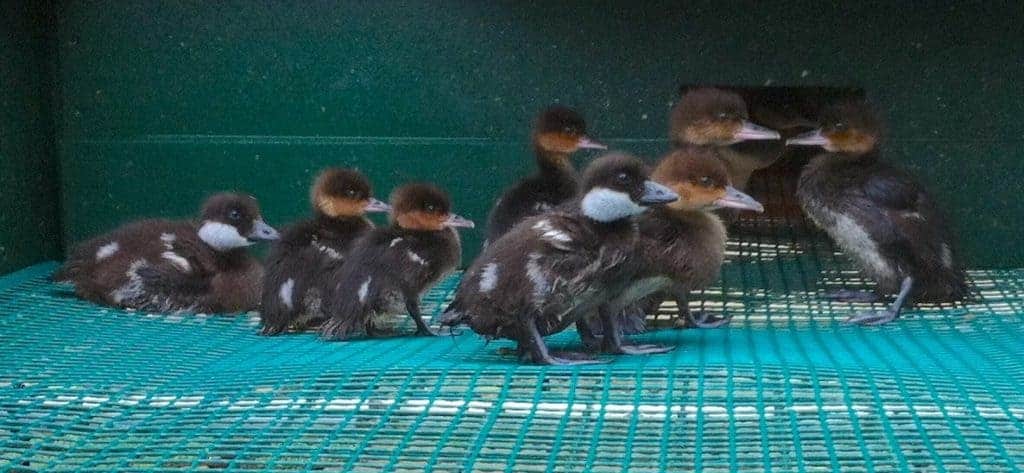Common Goldeneye

There are two subspecies of Common Goldeneye recognised:
- European B. c. clangula – of Scandinavia and central Europe, through Russia to Kamchatka, wintering further east, including Great Britain.
- American B. c. americana – of Alaska to Newfoundland; winters from Aleutian Islands and Newfoundland, throughout North America.
See also the account for Barrow’s Goldeneye, which is similar but less commonly kept.

Bucephala clangula
The Common Goldeneye is a chunky little sea duck — the tribe Mergini. In flight its wings make a soft whistling sound, giving rise to its specific name clangula, from the Latin clangere ‘to resound’ or ‘clang’! Their habitat includes forested areas bordering lakes, streams and wetlands.
This goldeneye’s diet is varied throughout the year but is mainly animal; aquatic invertebrates (molluscs, crustaceans, worms, insects and their larvae), amphibians, small fish and their spawn. Less than a quarter of it is plant matter. By placing some feed in a trough with stones, the foraging can help to keep bills in good order.
As a breeding rarity in the UK, this species is Amber-listed here.
Goldeneye are popular in collections in Europe and North America. Many find the breeding success to be better if several pairs are kept together. The drakes seem to enjoy showing off to impress their ducks and the display is very interesting to watch. Wild birds typically gather in small winter courting parties. The resulting pair bonds remain strong until mid-incubation.
Though hardy northern birds, goldeneye need some ice-free water all winter. Ideally, at least half of their pond should be deeper than a metre.

Goldeneye will take readily to elevated nest boxes, often dumping eggs in the nests of other cavity-nesters if choice of sites is limited. The female incubates 8–11 pale green, or green/bluish eggs for an average of 29–30 days. Ducklings dabble at first but are quick to learn how to dive for prey. Young are best reared with access to swimming water as soon as they reliably come off to preen. The deeper the water the better. On the whole, they don’t like human contact much and are easily stressed, but calm down a bit as adults.
FURTHER READING
Messmer, D.J., Alisauskas, R.T., Pöysä, H. et al. Plasticity in timing of avian breeding in response to spring temperature differs between early and late nesting species. Sci Rep11, 5410 (2021). https://doi.org/10.1038/s41598-021-84160-6